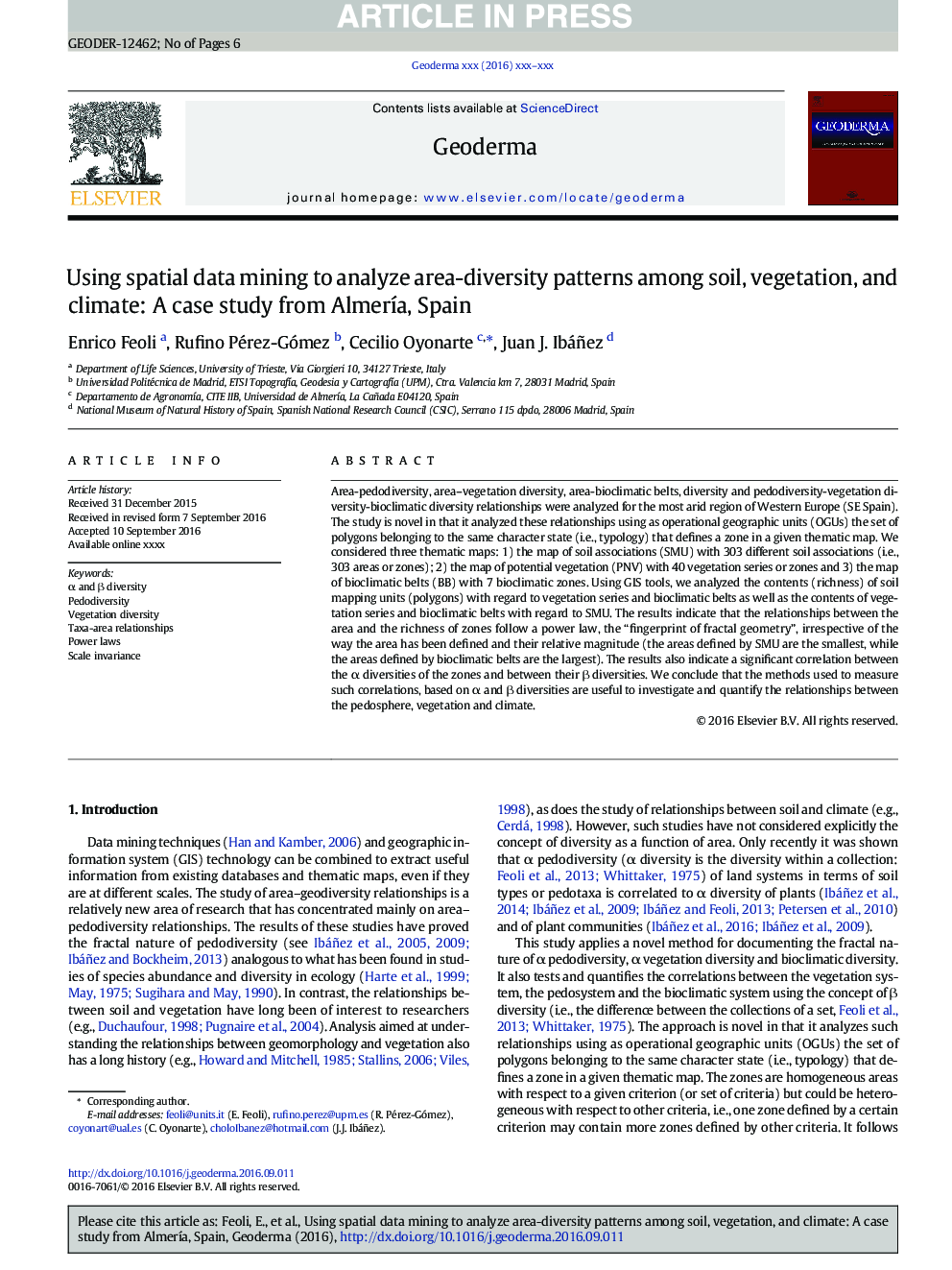| Article ID | Journal | Published Year | Pages | File Type |
|---|---|---|---|---|
| 5770664 | Geoderma | 2017 | 6 Pages |
Abstract
Area-pedodiversity, area-vegetation diversity, area-bioclimatic belts, diversity and pedodiversity-vegetation diversity-bioclimatic diversity relationships were analyzed for the most arid region of Western Europe (SE Spain). The study is novel in that it analyzed these relationships using as operational geographic units (OGUs) the set of polygons belonging to the same character state (i.e., typology) that defines a zone in a given thematic map. We considered three thematic maps: 1) the map of soil associations (SMU) with 303 different soil associations (i.e., 303 areas or zones); 2) the map of potential vegetation (PNV) with 40 vegetation series or zones and 3) the map of bioclimatic belts (BB) with 7 bioclimatic zones. Using GIS tools, we analyzed the contents (richness) of soil mapping units (polygons) with regard to vegetation series and bioclimatic belts as well as the contents of vegetation series and bioclimatic belts with regard to SMU. The results indicate that the relationships between the area and the richness of zones follow a power law, the “fingerprint of fractal geometry”, irrespective of the way the area has been defined and their relative magnitude (the areas defined by SMU are the smallest, while the areas defined by bioclimatic belts are the largest). The results also indicate a significant correlation between the α diversities of the zones and between their β diversities. We conclude that the methods used to measure such correlations, based on α and β diversities are useful to investigate and quantify the relationships between the pedosphere, vegetation and climate.
Related Topics
Physical Sciences and Engineering
Earth and Planetary Sciences
Earth-Surface Processes
Authors
Enrico Feoli, Rufino Pérez-Gómez, Cecilio Oyonarte, Juan J. Ibáñez,
